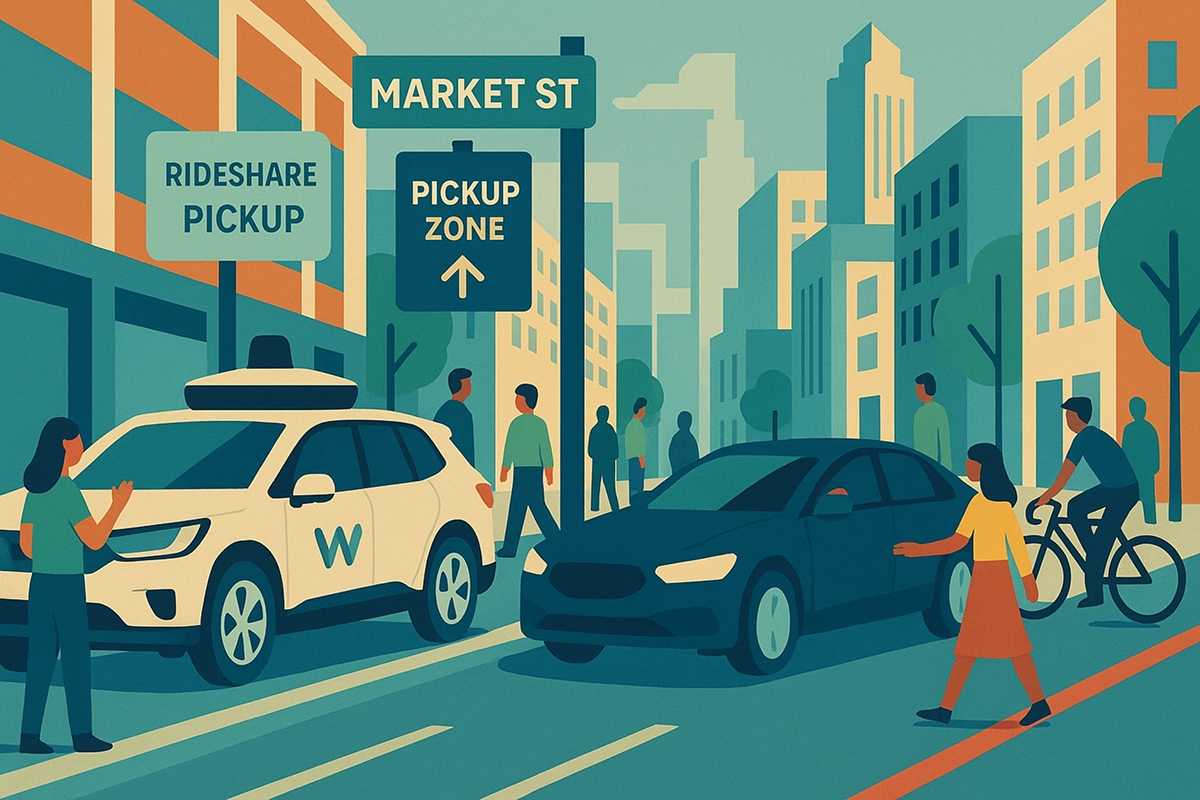Car-full Market Street - Uber and Lyft return to Market
Published August 21, 2025

The Facts
Starting August 26, 2025, Uber Black, and Lyft Black will join Waymo in offering limited passenger operations on Market Street. Uber and Lyft have not operated on Market since a 2020 ban. According to Garrett Leahy at The Standard, the SFMTA-approved pilot program will allow pick-ups and drop-offs at seven designated locations during off-peak and overnight hours. Operations are restricted to specific stops near businesses like the IKEA, the Proper Hotel, and the Warfield theater, while the general ban on private cars remains in effect.
Under the initial agreement, Waymo vehicles will be permitted to operate from 9 a.m. to 4 p.m. and from 7 p.m. to 6 a.m. Uber Black and Lyft Black will operate from 7 p.m. to 6 a.m.
The Context
Market Street has been largely car-free since 2020, when the city banned ride-hailing and private cars as part of the "Better Market Street" plan that prioritized buses and bikes. However, that broader reimagining never fully materialized, leaving Market Street to languish with reduced activity.
A recent GrowSF poll found San Franciscans split on allowing cars back on Market Street, with 44% supporting and 47% opposing the idea—making it among the least popular options. Voters largely prefer making it easier to open businesses along Market and increasing police presence.
The GrowSF Take
The current state of Market Street doesn't make anyone happy. It could have been great if the City had committed to executing the Better Market Street plan, but instead, we are left with a half-measure that fails to activate the space, fails to support bicyclists, fails to improve transit, and fails to help downtown recover.
The cost of the original Better Market Street plan was staggeringly high, and it's probably a good thing that the City didn't pursue a nearly billion dollar build out. But we're disappointed that the Breed administration and former MTA Director Jeffrey Tumlin chose to leave Market street as a liminal space rather than a functional thoroughfare, or adjust the scope of the project to a more realistic and pleasant alternative. And we're disappointed that the Lurie administration isn't pursuing it either.
We're willing to try some experiments, but are doubtful that letting cars back on Market will meaningfully improve the corridor. Most people visiting businesses on Market were not driving there before cars were banned, and we doubt they'll start now (though Ikea may be the big exception).
We should take a lesson from Denver and try out something similar to their 16th Street Promenade, which features a dedicated bus lane and pedestrian-friendly design, lots of restaurants, cafes, outdoor seating, and a free bus. Great public spaces facilitate leisure, commerce, and community, but the current state of Market Street doesn't do any of those well.